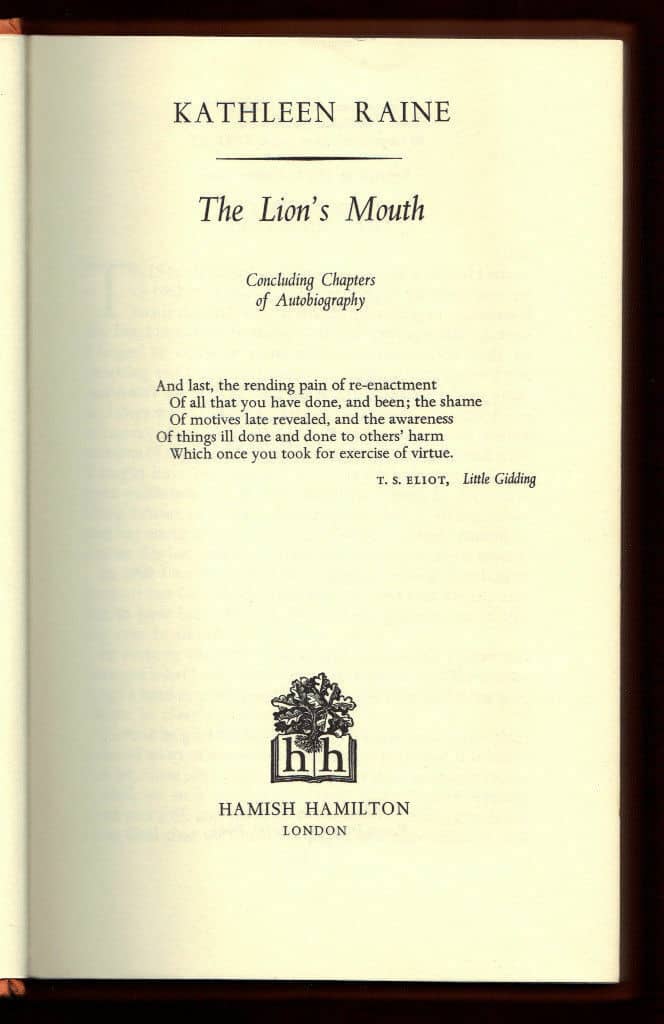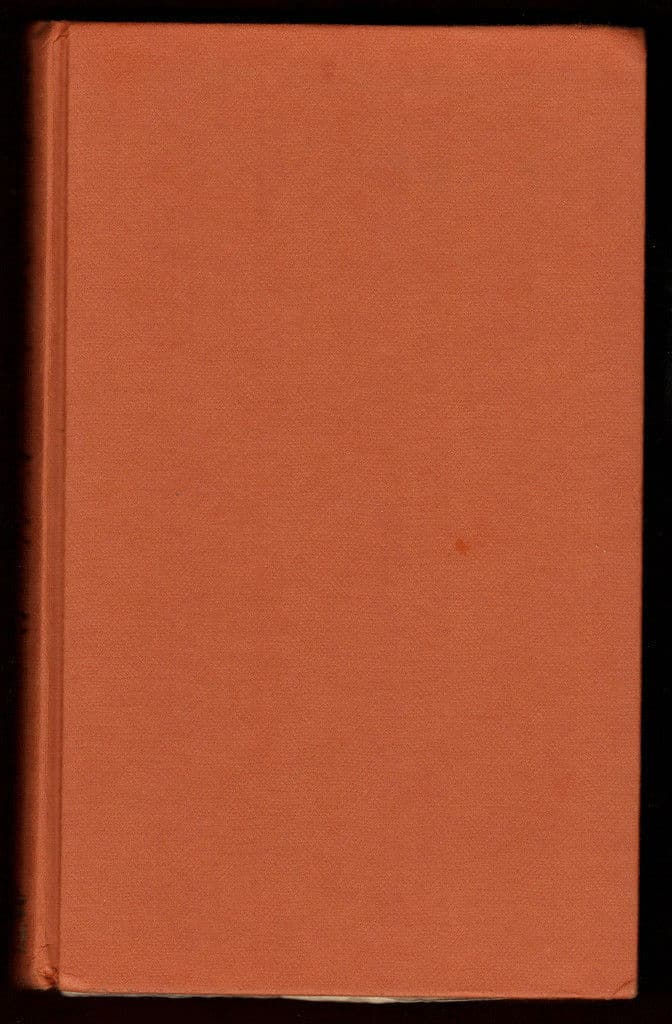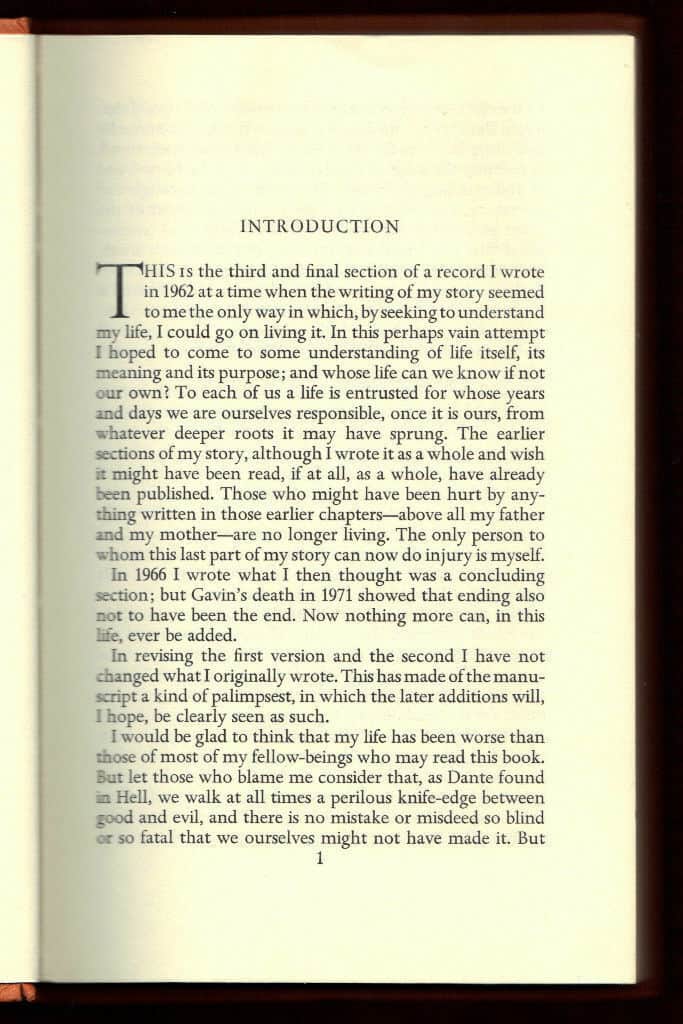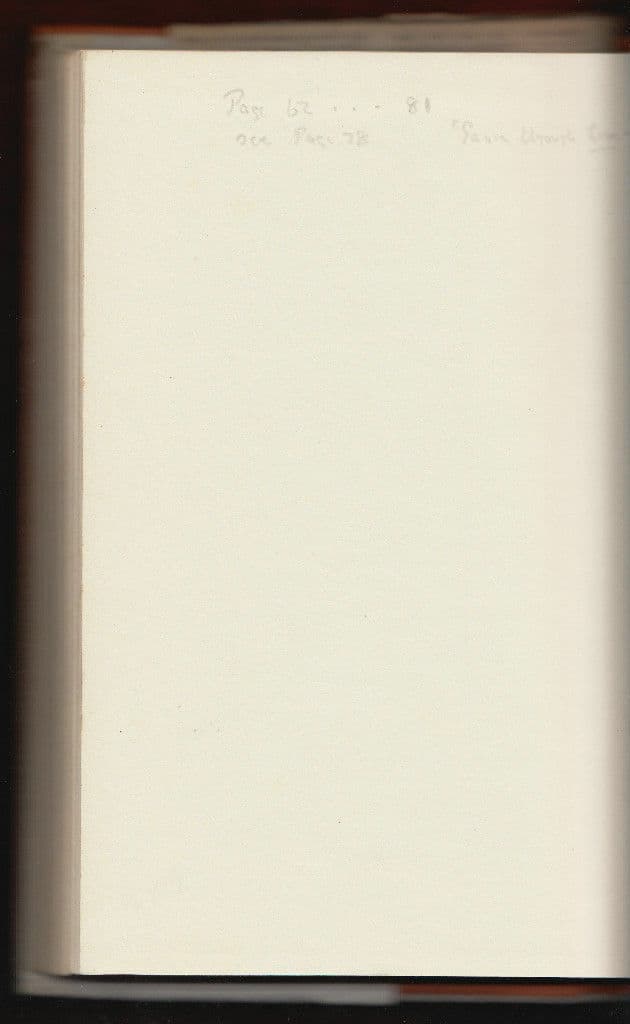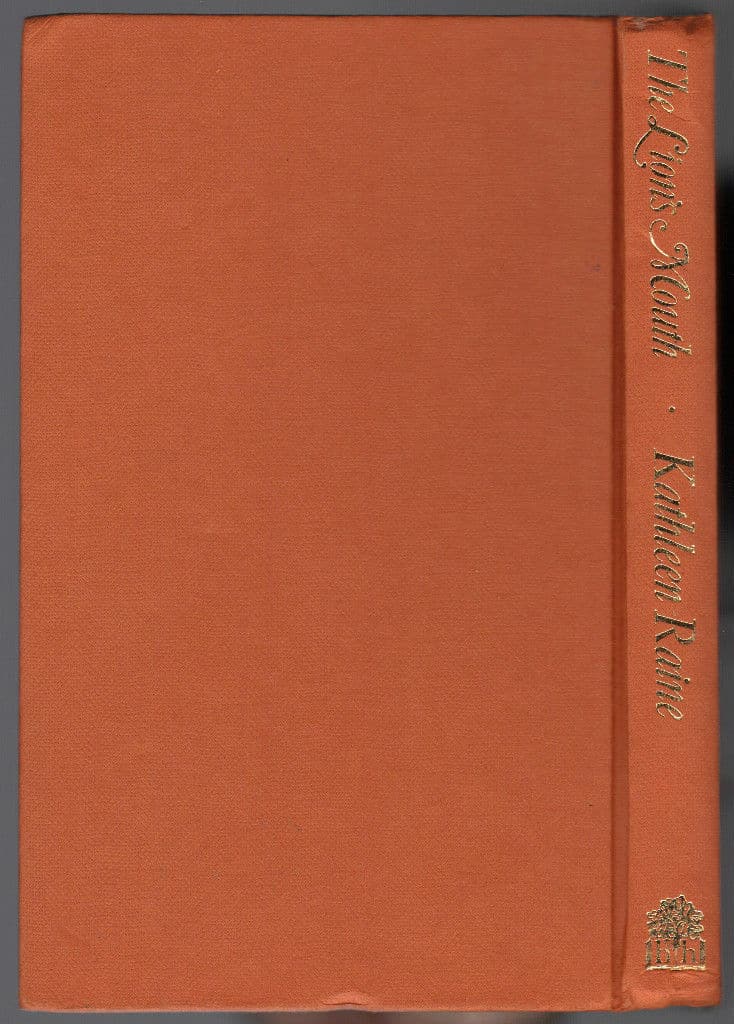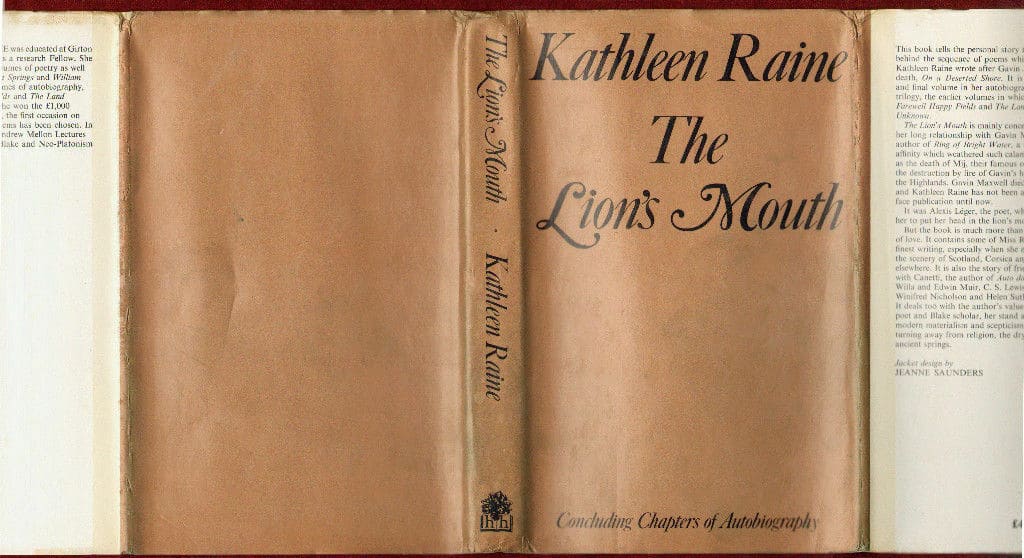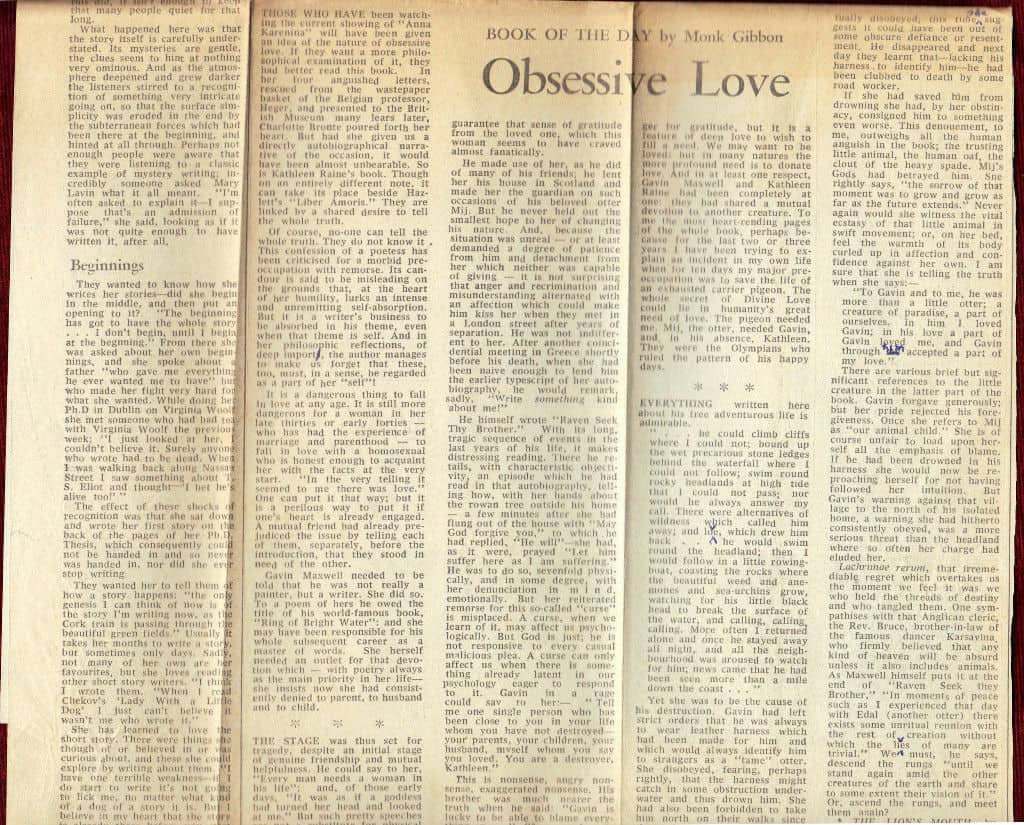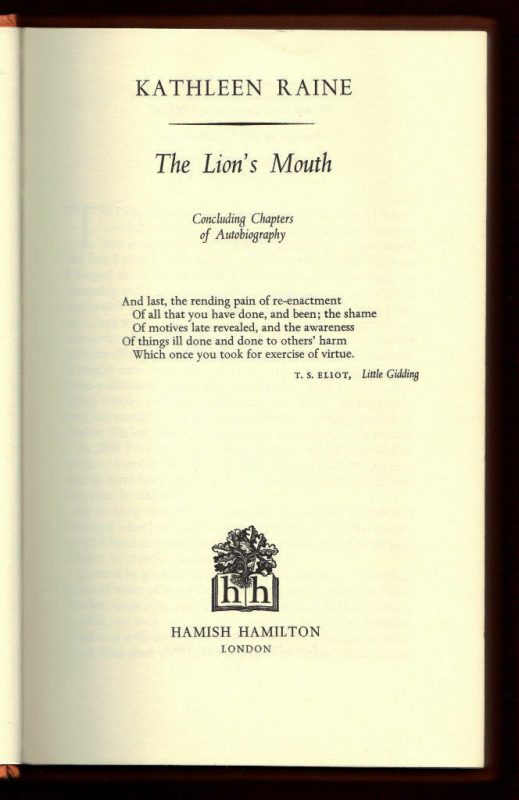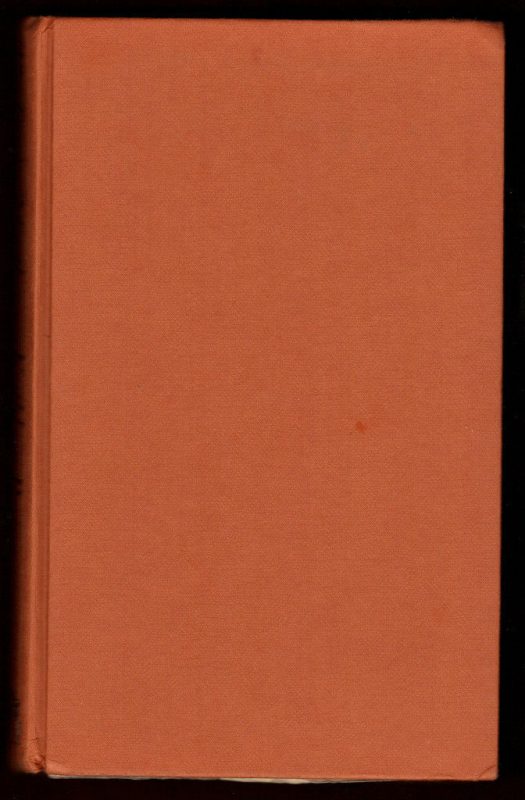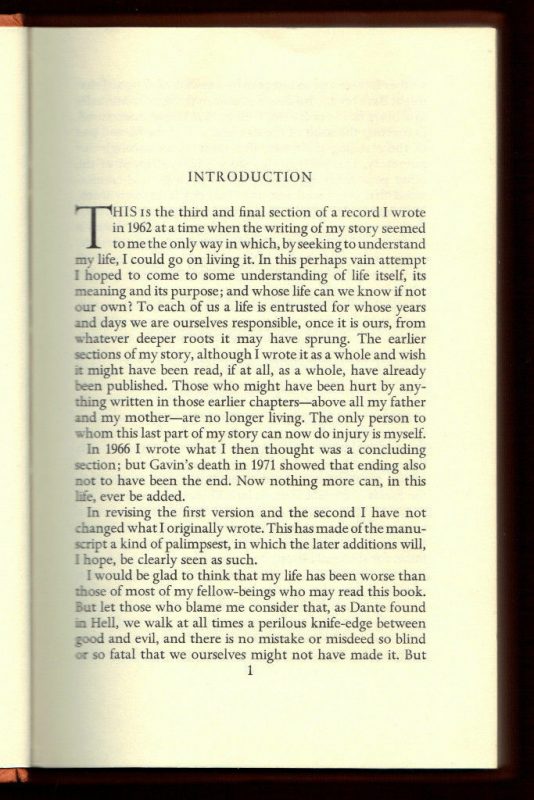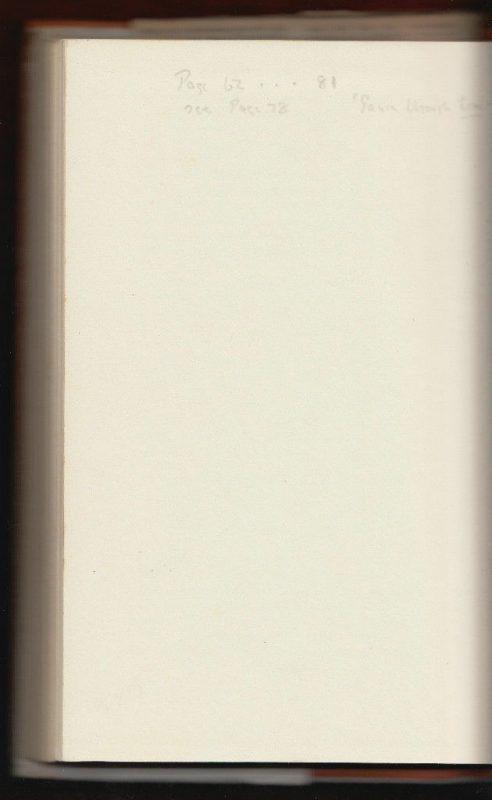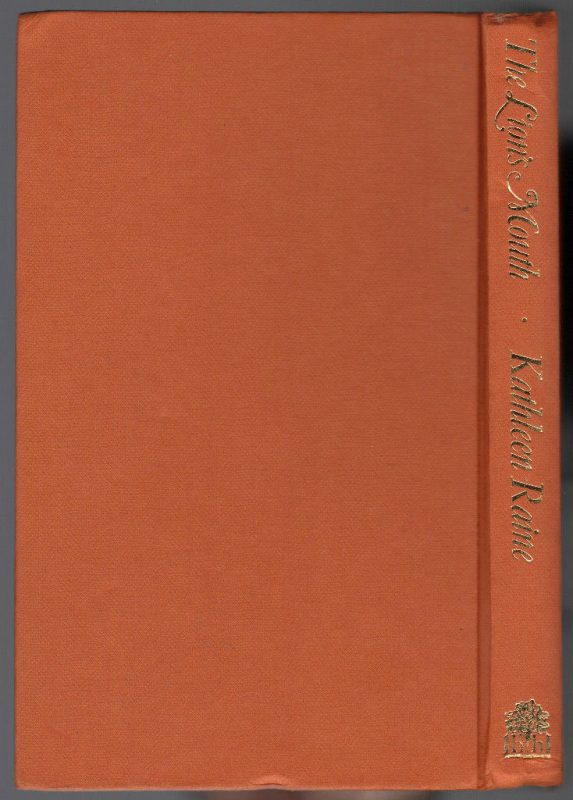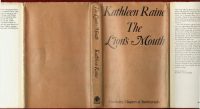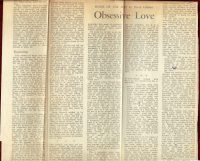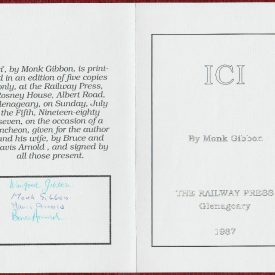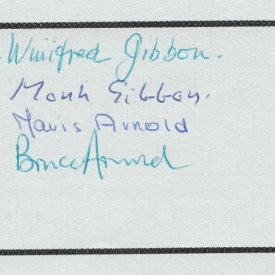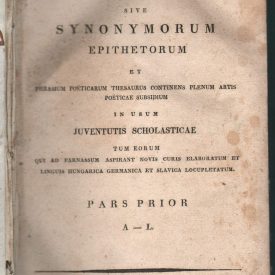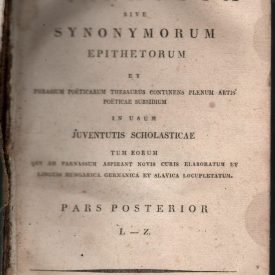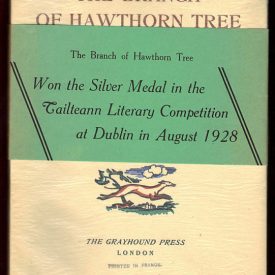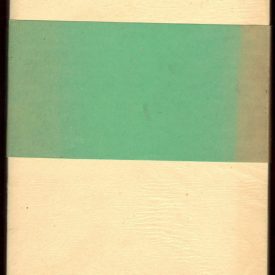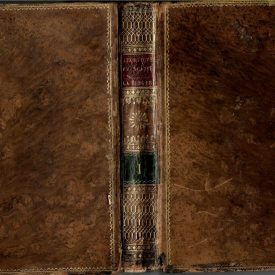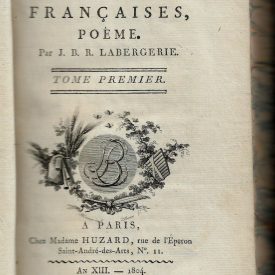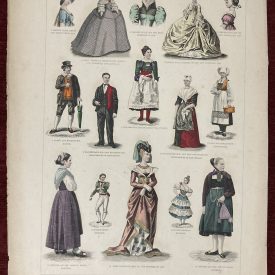Kathleen Raine Lion s Mouth 1977 Monk Gibbon Irish
Kathleen Raine The Lion’s Mouth Hamish Hamilton, 1977, London. First edition. Hardcover in dust jacket. Size: 22,2 x 13,7 cm. Pp. /4/, 163. Cover edges a little rubbed. A dust jacket very little rubbed. Otherwise, a nice and clean copy. With some handwritten pencil remarks of Gibbon on back blank page. Provenance: from the library of Irish poet William Monk Gibbon. Also, there is a newspaper clipping from The Irish Times (23. Nov. 1977) with the article of Monk Gibbon about this book. Article with some handwritten corrections by Gibbon.
***
For condition and details, see scans.
***
Kathleen Jessie Raine (14 June 1908 – 6 July 2003) was a British poet, critic, and scholar writing in particular on William Blake, W. B. Yeats and Thomas Taylor. Known for her interest in various forms of spirituality, most prominently Platonism and Neoplatonism, she was a founder member of the Temenos Academy. Raine was born in Ilford, Essex. Her mother was from Scotland [2]and her father was born in Wingate, County Durham. The couple had met as students at Armstrong College in Newcastle upon Tyne. Raine spent part of World War I, ‘a few short years’, with her Aunty Peggy Black at the Manse in Great Bavington Northumberland. She commented, “I loved everything about it.” For her it was an idyllic world and is the declared foundation of all her poetry. Raine always remembered Northumberland as Eden: “In Northumberland I knew myself in my own place; and I never ‘adjusted’ myself to any other or forgot what I had so briefly but clearly seen and understood and experienced.” This period is described in the first book of her autobiography, Farewell Happy Fields (1973). Raine noted that poetry was deeply ingrained in the daily lives of her maternal ancestors: “On my mother’s side I inherited Scotland’s songs and ballads…sung or recited by my mother, aunts and grandmothers, who had learnt it from their mothers and grandmothers… Poetry was the very essence of life.”[2] Raine heard and read the bible daily at home and at school, coming to know much of it by heart. [2] Her father was an English master at County High School in Ilford. He had studied the poetry Wordsworth for his M.Litt thesis and had a passion for Shakespeare and Raine saw many Shakespearean plays as a child. From her father she gained a love of etymology and the literary aspect of poetry, the counterpart to her immersion the poetic oral traditions. She wrote that for her poetry was “not something invented but given…Brought up as I was in a household where poets were so regarded it naturally became my ambition to be a poet”. She confided her ambition to her father who was sceptical of the plan. “To my father” she wrote “poets belonged to a higher world, to another plane; to say one wished to become a poet was to him something like saying one wished to write the fifth gospel”. [3] Her mother encouraged Raine’s poetry from babyhood. Raine was educated at County High School, Ilford, and then read natural sciences, including botany and zoology, on an Exhibition at Girton College, Cambridge, receiving her master’s degree in 1929. [3]While in Cambridge she met Jacob Bronowski, William Empson, [3]Humphrey Jennings and Malcolm Lowry. [4] In later life she was a friend and colleague of the kabbalist author and teacher, Z’ev ben Shimon Halevi. Raine was married to Hugh Sykes Davies. She left him for Charles Madge, they had two children together, however their marriage also broke up. She also held an unrequited passion for Gavin Maxwell. The title of Maxwell’s most famous book Ring of Bright Water, subsequently made into a film of the same name starring Virginia McKenna, was taken from a line in Raine’s poem “The Marriage of Psyche”. The relationship with Maxwell ended in 1956 when Raine lost his pet otter, Mijbil, indirectly causing the animal’s death. Raine held herself responsible, not only for losing Mijbil but for a curse she had uttered shortly beforehand, frustrated by Maxwell’s homosexuality: “Let Gavin suffer in this place as I am suffering now.” Raine blamed herself thereafter for all Maxwell’s misfortunes, beginning with Mijbil’s death and ending with the cancer that took his life in 1969.[5] From 1939 to 1941, Raine and her children shared a house at 49a Wordsworth Street in Penrith with Janet Adam Smith and Michael Roberts and later lived in Martindale. She was a friend of Winifred Nicholson. Raine’s two children are Anna Madge (born 1934) and James Wolf Madge (1936). In 1959, James married Jennifer Alliston, the daughter of Raine’s friend, architect and town planner Jane Drew. Drew was a direct descendant of the neoplatonist Thomas Taylor [6] whom Raine studied and wrote about. Thus a link was forged between Raine and Taylor by the two grandchildren Sonia and Thomas Madge. At the time of her death, following an accident, Raine resided in London. Works Her first book of poetry, Stone And Flower (1943), was published by Tambimuttu, and illustrated by Barbara Hepworth. In 1946 the collection, Living in Time, was released, followed by The Pythoness in 1949. Her Collected Poems (2000) drew from eleven previous volumes of poetry. Her classics include Who Are We? There were many subsequent prose and poetry works, including Blake and Tradition, published in 1968. The story of her life is told in a three-volume autobiography that is notable for the author’s attempts to read (or impose) a structure on her memories that is quasi mythical, thus relating her own life to a larger pattern. This reflects patterns that can be detected in her poetry, in which she was clearly influenced by W. B. Yeats. The three books were originally published separately and later brought together in a single volume, entitled Autobiographies (the title itself is in conscious imitation of Yeats), edited by Lucien Jenkins. Raine made translations of Honoré de Balzac’s Cousine Bette (Cousin Bette, 1948) and Illusions perdues (Lost Illusions, 1951). She was a frequent contributor to the quarterly journal, Studies in Comparative Religion, which dealt with religious symbolism and the Traditionalist perspective. With Keith Critchlow, Brian Keeble and Philip Sherrard she co-founded, in 1981, Temenos, a periodical, and later, in 1990, the Temenos Academy of Integral Studies, a teaching academy that stressed a multistranded universalist philosophy, and in support of her generally Platonist and Neoplatonist views on poetry and culture. She studied the 18th-century English Platonist Thomas Taylor (1758–1835), and published a selection of his works. Raine was a research fellow at Girton College from 1955 to 1961, and in 1962 she was the Andrew Mellon Lecturer at the National Gallery of Art in Washington D.C. She taught at Harvard for at least one course about Myth and Literature offered to teachers and professors in the summer. She also spoke on Yeats and Blake and other topics at the Yeats School in Sligo, Ireland in the summer of 1974. A professor at Cambridge and the author of a number of scholarly books, she was an expert on Coleridge, Blake,[8] and Yeats. Honours She received honorary doctorates from universities in the United Kingdom, France and the United States and won numerous awards and honors, including the Edna St. Vincent Millay Prize from the American Poetry Society (date unknown), and also: 1952 — Harriet Monroe Memorial Prize 1953 — Arts Council Award 1961 — Oscar Blumenthal Prize 1970 — Cholmondeley Award 1972 — Smith Literary Award 1992 — Queen’s Gold Medal for Poetry 2000 — Order of the British Empire, Commander 2000 — L’Ordre des Arts et des Lettres, Commandeur.
***
William Monk Gibbon (1896 – 29 November 1987) was an Irish poet and prolific author, known as “The Grand Old Man of Irish Letters”. His collection of over twenty volumes of poetry, autobiography, travel and criticism are kept at Queen’s University Belfast. He also wrote many published novels, and has been characterised as “self-regarding and prickly”. He was the son of the Rev. Canon William Monk Gibbon, a Church of Ireland clergyman, and from 1900 vicar of St. Nahi’s Church, Dundrum. His mother, Isabella Agnes Meredith, was a daughter of William Rice Meredith of Dublin, the brother of John Walsingham Cooke Meredith. Monk was a nephew of The Rt. Hon. Richard Edmund Meredith and a first cousin of Carew Arthur Meredith. Monk’s uncle inherited the Gibbon estates of Sleedagh House, County Wexford, and The Parks in Neston, Cheshire, which came to them via the Monk family from who he took his name. He was educated at St. Columba’s College, Dublin and Keble College, Oxford, but after only one term he volunteered for the army, serving as an officer in France during the First World War until invalided out in 1915. He became an avid pacifist after his experiences of war, and left Ireland to teach English in Switzerland. He also taught in England before returning to Ireland, not retiring until he was in his eighties. As a British Officer on leave in Ireland, he was involved in the Easter Rising of 1916. His book Inglorious Soldier gives a first-hand, and one of the most detailed accounts of the shooting of the pacifist Francis Sheehy-Skeffington. His papers present lively and intimate accounts of the famous Irish writers whom he knew personally, such as William Butler Yeats, George Moore (novelist), Edith Anna Somerville and Katharine Tynan. At his father’s church, Lily Yeats, sister of W. B. Yeats, was a parishioner. There was also a family relationship: Gibbon and the Yeats family were cousins. There was no love lost between the poets Gibbon and Yeats, however; and the biography Gibbon wrote was rather hostile. Yeats in return said of Gibbon: “Monk Gibbon is one of the three people in Dublin whom I dislike… Because he is argumentative!” In 1963, Gibbon collaborated in the editing and publication of Michael Farrell’s posthumous novel Thy Tear’s Might Cease. In 1928, he married Mabel Dingwall, daughter of Walter Molyneux Dingwall and Mabel Sophia Spender, a daughter of Edward Spender of Bath, Somerset. Edward Spender was a strong supporter of the Women’s Suffrage movement in which his sister, the novelist Emily Spender played a leading role as a member of the executive committee of the Central Committee of the National Society for Women’s Suffrage. Edward Spender was a cousin of the diarist Henry Crabb Robinson, and a brother-in-law of the novelist Lillian Spender and the liberal politician William Saunders, with whom he founded the Central News Agency (London). Mrs Gibbon’s mother was a first cousin of John Alfred Spender, uncle of the poet Sir Stephen Spender. The Gibbons’ home, Tara Hall, at Sandymount, County Dublin, was a literary centre and afternoon tea parties there often ran into the night. Frequent visitors there included Irish writers such as Padraic Colum, Ulick O’Connor and Austin Clarke. Gibbon always wrote in bed and often wandered down to the sea front in his pyjamas to collect driftwood. He was a keen cyclist all his life and could still be found riding his bicycle around Sandycove in his late eighties. Works: The Tremulous String (1926) Limited Edition 250 hand printed copies; The Branch of Hawthorn Tree (1927); The Seals (1935) autobiography; The Living Torch (1937) poems by AE, editor; Mount Ida (1948); This Insubstantial Pageant (1951); The Masterpiece and the Man: Yeats as I Knew Him (1959) biography; The Climate of Love (1961); Inglorious Soldier (1968) memoir; The Brahms Waltz (1970); The Velvet Bow (1972); The Pupil (1981).
***

